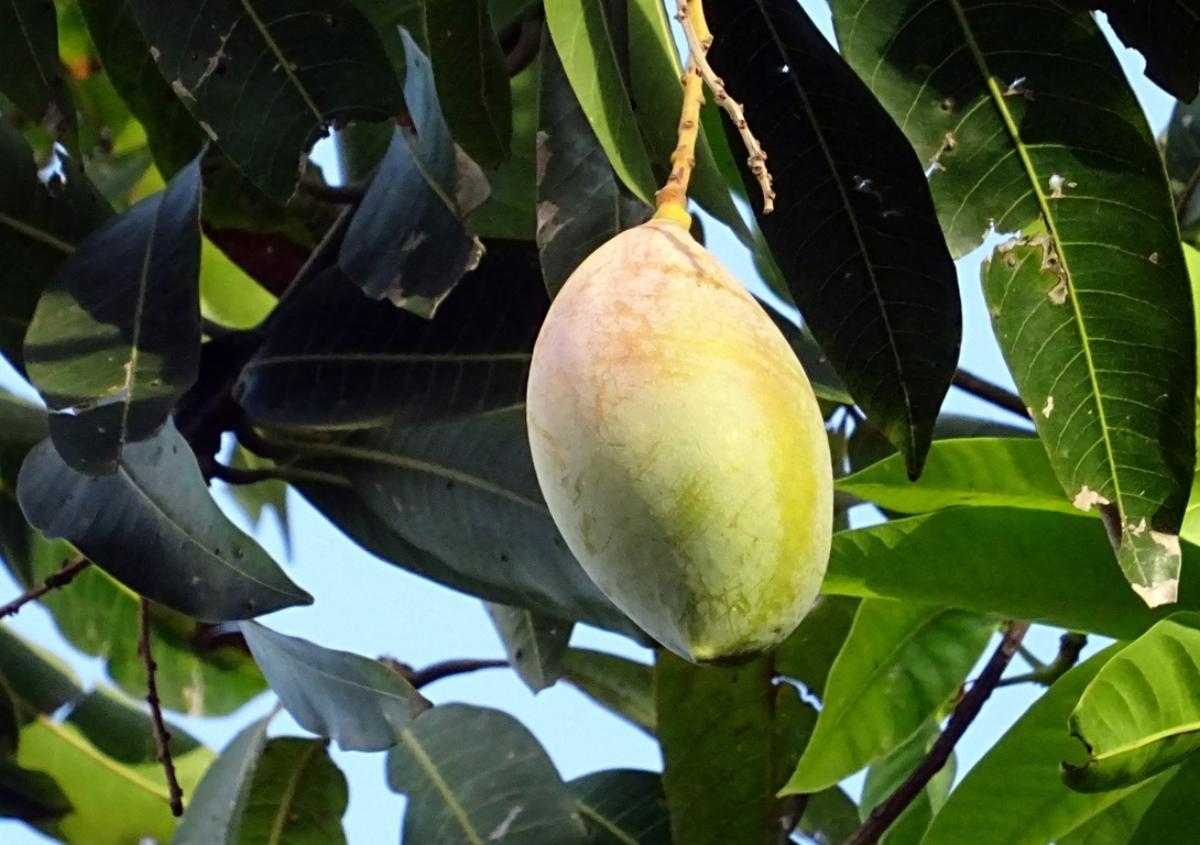
Mango is a fruit tree of tropical origin that many people want to grow in Spain, a country with different climates and different types of land. The plant is really very interesting: it gives very good shade, has a high ornamental value due to its size and large leaves, and it also produces delicious fruits.
However, when planted in the wrong place it becomes a very complicated tree. If we take this into account, Is it possible to grow mango in Spain? And what are the most appropriate varieties?
What are the characteristics of the mango tree?

If you want to cultivate mango In Spain, it is highly recommended that you first know what the plant is like. In this way, you can find the most suitable place for it to grow. So that, you should know that it is an evergreen tree that reaches 30 meters in height. Its crown is wide, 4-5 meters, and is composed of lanceolate leaves, large between 15 and 30 centimeters in length, and dark green.
The trunk grows almost like a straight pillar, reaching about 50 centimeters thick. The roots it has are not very invasive, but we are talking about a large tree, and therefore it needs space to develop. For this reason, it is not recommended to grow it in pots all its life, nor in small gardens.
If we talk about flowers, there are female and male that appear in different copies. In any case, they are grouped in axillary, or terminal, panicles. They can be red, yellow, orange, pink or green, and have the peculiarity that they produce nectar.
The fruit is a drupe with the skin that is usually first green, then yellow, and when it finishes ripening, red-garnet. The pulp is more or less fibrous, usually yellow-orange, and sweet in taste. It only contains one seed, brown, and smaller than the fruit.
How must mango cultivation be in order for it to grow well?

To grow mango successfully it is very important that the soil is deep, light and with very good drainage. Therefore, the most recommended type of soil is one that has a silty-sandy or clay-sandy texture, with a pH of around 5.5-6. In the rest it can have many problems to develop well, since if the ground is compact it costs a lot to root, and if it does not succeed, the growth it has will hardly be visible year after year. Also, if you have a pH of 7 or higher, you will lack iron and your leaves will turn yellow.
On the other hand, this plant needs frequent waterings. A tree that is planted in the ground if it wants to prosper you will have to receive between 16 and 20 liters of water per week for the first two years, and between 10 and 14 liters per week for the rest, which means that in climates where rainfall is scarce, as in the Mediterranean region, unless it is watered it will not be easy.
Likewise, it needs to be planted in a spacious place, at a distance of at least 5 meters from the wall or wall, and other large plants, be it trees or palm trees. In this way, the mango can be enjoyed a lot, since it will grow without any impediment. And, if you plant, for example, very close to other trees, it could be the case that its trunk leans, moving away from the plant that is closer, to be able to capture more light.
What climate is needed to grow mango?
Lastly, we have to talk about the temperatures. Being originally from India, the mango does not withstand cold temperatures, and frost can cause death. Ideally, it should be planted in an area where the mercury in the thermometer is between a maximum of 35ºC and a minimum of 5ºC, that is, in an area with a preferably tropical or subtropical climate. Still, it must be said that there are some varieties that do support something else, like these:
- Antonio: resistant up to -2ºC.
- gomera 1: resistant up to -1ºC.
- Timoteo: resistant up to -2ºC.
In any case, it is convenient to have it a little protected, at least the first years so that it can better adapt to the climatic and environmental conditions of the place.
Thus, it is possible to grow mangoes in Spain, but only if you live in a place where the climate is hot and humid, such as the island of Tenerife, the south of the Iberian Peninsula, or if you have a garden. with a warm microclimate.
Excellent article, where the main conditions necessary to grow the mango successfully are explained.
I would like to add that, in mainland Spain and throughout the Mediterranean area, the mango is perfectly adapted to the climatic conditions. For example, in Malaga, where the current cultivated area exceeds 10.000 hectares.
The main commercial mango varieties can be found throughout this geographical area.
I would like to know if in the Ebro delta I could grow it
Hi John.
It depends on the temperatures there are. Mango thrives in hot climates, where there are no frosts. If there are not in your area, then there will be no problems.
Greetings.